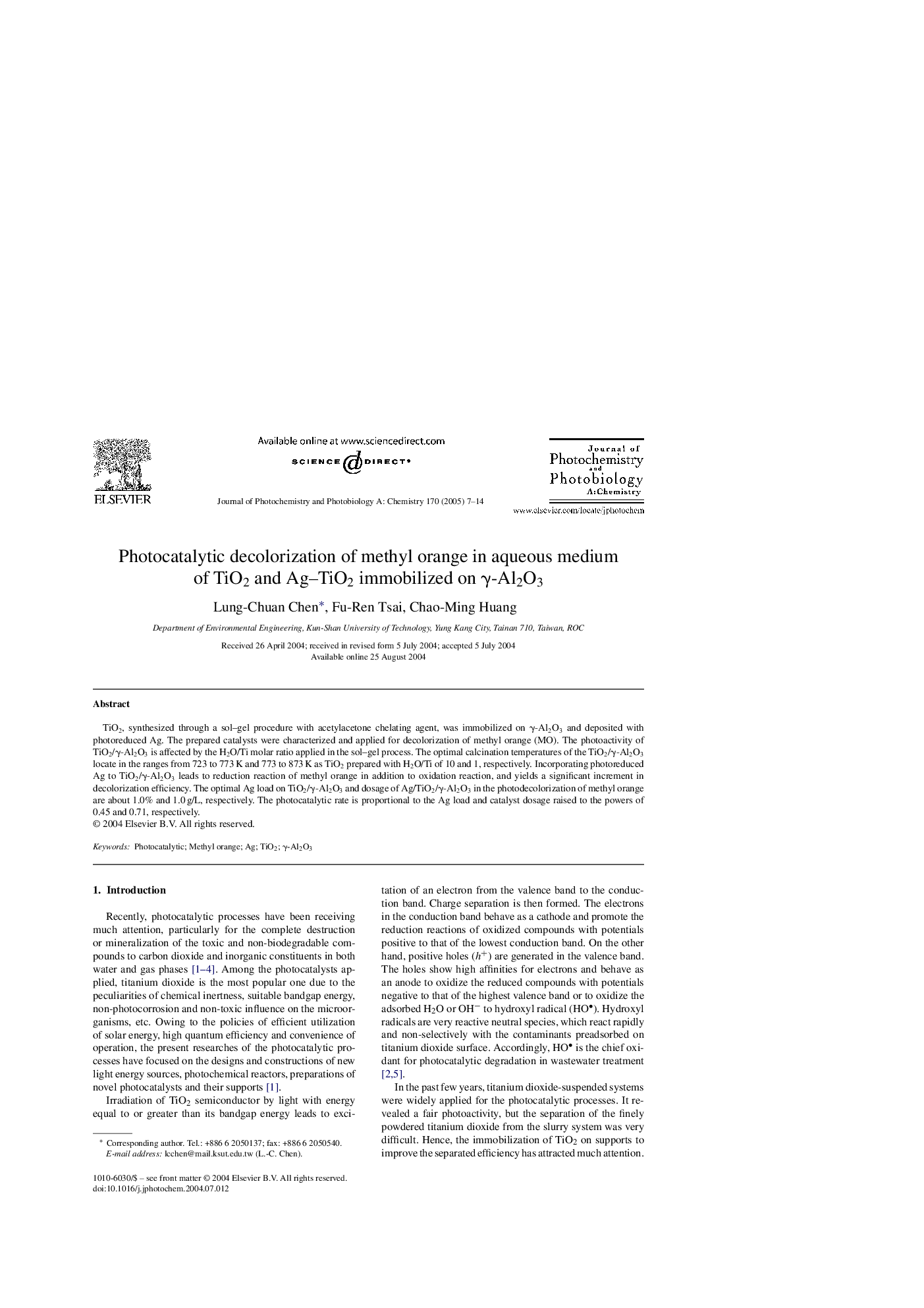| Article ID | Journal | Published Year | Pages | File Type |
|---|---|---|---|---|
| 9605730 | Journal of Photochemistry and Photobiology A: Chemistry | 2005 | 8 Pages |
Abstract
TiO2, synthesized through a sol-gel procedure with acetylacetone chelating agent, was immobilized on γ-Al2O3 and deposited with photoreduced Ag. The prepared catalysts were characterized and applied for decolorization of methyl orange (MO). The photoactivity of TiO2/γ-Al2O3 is affected by the H2O/Ti molar ratio applied in the sol-gel process. The optimal calcination temperatures of the TiO2/γ-Al2O3 locate in the ranges from 723 to 773 K and 773 to 873 K as TiO2 prepared with H2O/Ti of 10 and 1, respectively. Incorporating photoreduced Ag to TiO2/γ-Al2O3 leads to reduction reaction of methyl orange in addition to oxidation reaction, and yields a significant increment in decolorization efficiency. The optimal Ag load on TiO2/γ-Al2O3 and dosage of Ag/TiO2/γ-Al2O3 in the photodecolorization of methyl orange are about 1.0% and 1.0 g/L, respectively. The photocatalytic rate is proportional to the Ag load and catalyst dosage raised to the powers of 0.45 and 0.71, respectively.
Related Topics
Physical Sciences and Engineering
Chemical Engineering
Bioengineering
Authors
Lung-Chuan Chen, Fu-Ren Tsai, Chao-Ming Huang,
